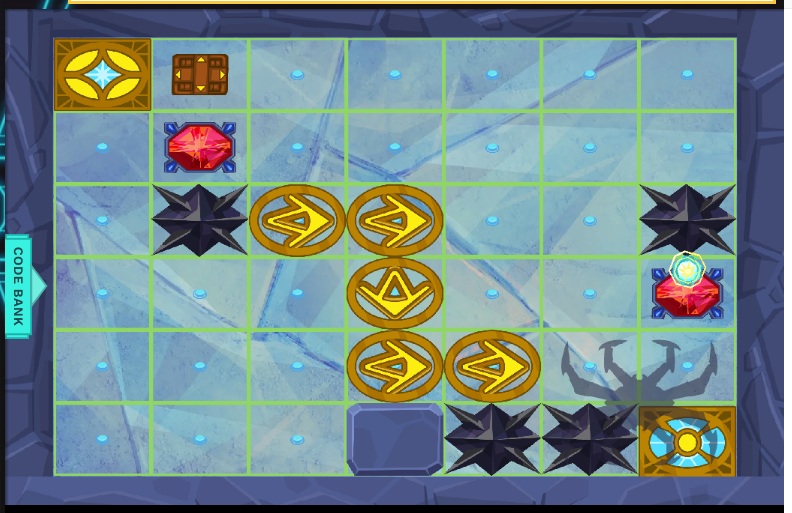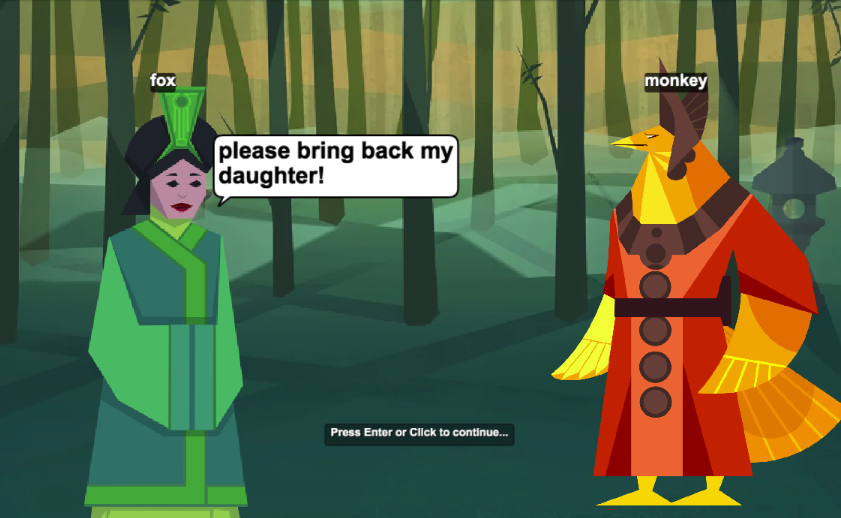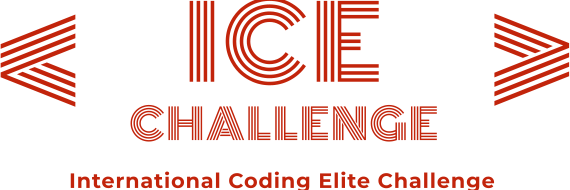Ozaria SheCreates Competition
Rules and Regulations
General
- Contestants will be allowed to code in Python or JavaScript. Please note that Python is strongly preferred. The other languages are still in beta version and may not be stable.
- Participants will compete and submit their final project on an individual basis.
Project Submission
- Submission deadline for both primary and secondary divisions is 1 April 2022 at 23:59 HKT
- Participants must complete all goals for submitting the Capstone project and complete the respective Ozaria chapter

Primary division
- Capstone project is completed at the end of Chapter 1, “Capstone Project: Gauntlet”
- Participants must play Chapter 1 in order to reach the Capstone project.
Secondary division
- Capstone project is completed at the end of Chapter 2 Module 5, “Capstone Project: Story Maker”
- Participants must play Chapter 2 Module 1-4 in order to complete Module 5.

- The projects submitted must be original work by the individual and should not infringe on the copyright of any third parties.
- All decisions made by the Judging Panel shall be final, participants shall not object.
Hardware Requirements
- Ozaria runs best on computers with at least 4GB of RAM, on a modern browser such as Chrome, Safari, Firefox, or Edge.
- Chromebooks with 2GB of RAM may have minor graphics issues in later units. A minimum of 200 Kbps bandwidth per student is required, although 1+ Mbps is recommended.
Project Submission Rubrics
Chapter 1:
1 Novice | 2 Developing | 3 Proficient | 4 Accomplished | 5 Exemplary | |
Design & Creativity | Student used only default settings for optional features rather than customizing their game design. | Student used 1-2 customizations or optional features in their game. | Student customized 3-5 optional features in their game, such as themes and map size. | Student customized 6-8 optional features in their game, such as themes and map size. | Student added more than 8 optional game elements, making their game vary widely from the default. |
Coding Concepts | Student did not complete any of the in-game goals for their final project code. | Student completed half of the in-game goals for their final project code. | Student completed all the in-game goals for their final project code, including implementing sequences & loops. | Student completed all in-game goals and incorporated some additional sequences in their final project code. | Student completed all in-game goals and incorporated many additional sequences and loops in their final project code. |
Rules and Instructions | No written rules or instructions were provided. | Student wrote a short note on how to play the game, but did not include rules or instructions. | Student wrote limited rules or instructions for the player to play the game. | Student wrote some rules and instructions for the player to play the game. | Student wrote informative and descriptive rules and instructions for the player to successfully play and complete the game. |
Items and Obstacles | Student did not include any additional items or obstacles in their game for customization. | Student included 1-4 items and obstacles in their game. | Student included minimal 5-8 items and obstacles that made the game interesting. | Student included 9-12 items and obstacles in their game. | Student included more than 12 items and obstacles in the game that made it interesting and varied. |
Chapter 2:
1 Novice | 2 Developing | 3 Proficient | 4 Accomplished | 5 Exemplary | |
Design & Creativity | Student used only default settings for optional features rather than customizing their game design. | Student used 1-2 customizations or optional features in their game. | Student customized 3-5 optional features in their game, such as adding more characters and dialogue. | Student customized 6-8 optional features in their game. | Student added more than 8 optional game elements, making their game vary widely from the default. |
Coding Concepts | Student did not complete all the in-game goals for their final project code. | Student completed half of the in-game goals for their final project code. | Student completed all the in-game goals for their final project code, including implementing variables and conditionals. | Student completed all in-game goals and incorporated some additional sequences in their final project code. | Student completed all in-game goals and incorporated additional variables and conditionals to add to complexity of their final project code. |
Story Flow | No evidence of a story and no user input implemented into the story. | Story was limited and had no user input implemented into the story. | Story was brief and had some unexplained logic for user input and overall storyline. | Story was developed and included thought out choices for user input. | Story was well-developed, coherent and easy to follow, all choices given to the user were logical to the story and well planned. |
Characters | Student did not integrate any characters into their story. | Student integrated 1-2 characters, and did not have any scene changes in their story. | Student integrated 3-4 characters and had limited scene changes in their story. | Student developed 3-4 characters and had scene changes to make the story interesting. | Student integrated more than 4 characters and varied scenes into their story, making it outstanding. |
Awards & Prizes
Primary Division | |
Champion | Trophy + Printed Certificate + Ozaria Full License (duration of 3 months) |
1st runner-up | Trophy + Printed Certificate + Ozaria Full License (duration of 3 months) |
2nd runner-up | Trophy + Printed Certificate + Ozaria Full License (duration of 3 months) |
Secondary Division | |
Champion | Trophy + Printed Certificate + Ozaria Full License (duration of 3 months) |
1st runner-up | Trophy + Printed Certificate + Ozaria Full License (duration of 3 months) |
2nd runner-up | Trophy + Printed Certificate + Ozaria Full License (duration of 3 months) |
GIRLSTEM Outstanding Student Award (3 seats) | Medal + Printed Certificate |
All students | Printed Certificate of Participation |
Disqualification / Penalty
❖ For virtual competition:
- A contestant may be disqualified from the competition or suffer a penalty if the contestant:
- is found suspicious of copying other contestants’ work
- Serious offenders may be banned from all future ICE Challenge-related activities
